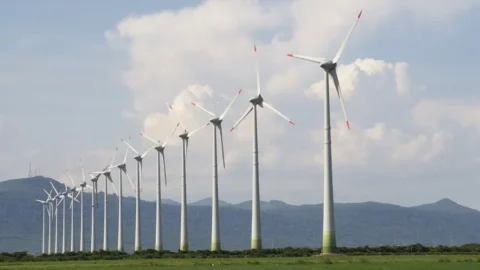That the German economy is slowing down is now a fact. In particular, its leading sector is slowing down – the automotive sector – which is worth a fifth of the entire German manufacturing added value (in Italy this value is equal to 5,8%, to make a comparison) and which in the January- August 2019 scored a frightening drop of over 11%. How much all of this affects Italian manufacturing, which is the second most important in Europe (together, Rome and Berlin create 47% of European manufacturing added value) and which is linked to the German one in many sectors including the car, the quantified the study center of Intesa Sanpaolo, in collaboration with Prometeia, in Industry Sectors Report: “The German client – revealed the chief economist of the first Italian bank, Gregorio De Felice – it weighs about 20% on the manufacturing added value that Italy allocates to the automotive world. A non-negligible share”.
In fact, Italy's role is particularly central, more than that of other countries also thanks to the diversification of its skills and therefore of supplies: in fact, the contributions of the metallurgy and mechanical supply chain stand out, but also of the other intermediates (rubber / plastic) and the Fashion system (textiles and leather goods for car interiors). In particular, in this latter sector, Made in Italy affects even more than the same German domestic contribution, with a share of 17,4% of the added value produced by the German automotive industry. "Overall - explains the research - our country contributes a share of added value of 2,4% to the German production of motor vehicles". Which puts us in first place among the supplier countries, even ahead of China, obviously behind the 70% German domestic contribution.
ITALIAN INDUSTRY: FORECASTS GENERAL
Two considerations emerge from these data: the first is that, as is known, the difficulties of the German economy, which is also the most exposed to the threat of tariffs on the United Kingdom (almost 20 billion in exports at risk), is a damage to the Italian economy even more than to those of other European partners. The second is that Italian manufacturing, according to the results of the analysis by Intesa Sanpaolo and Prometeia, is "increasingly diversified, more resilient and less indebted". In truth, the picture for 2019 is not encouraging (turnover stable at +0,2%, against growth that exceeded 2017% in 4), but according to forecasts it will do better in the two-year period 2020-2021, when this sector, which alone generates 900 billion in turnover will return to grow more significantly, by 1,3% on average per year (at constant prices).
This despite the uncertainties that remain on the international front, as explained by De Felice: “As far as the US-China duties are concerned, there are glimmers, then we need to see what happens with the EU. Then the regime of very low interest rates remains: Draghi left the reins of the ECB to Christine Lagarde after trying everything. Frankfurt could not do more than that, now it would be up to the countries to adopt more expansive budgetary policies”. Also because there is space: Italy has reduced the spread, has better relations with the EU and is improving the health of its banking system, thanks to the sale of non-performing loans which is proceeding at a good pace. And if it is true that growth is still lacking, the Report also points out that household disposable income grows faster than GDP: +1% in 2020, against +0,3% (according to Intesa Sanpaolo estimates).
“This means – explained De Felice – that domestic demand can make up for the slowdown in international trade flows. The key variable for the coming months and years will be investments: private investments are needed, because the trade balance of Italian companies has risen to almost 94 billion and that money can be reinvested, and public ones are needed, first of all because they activate European funds that would otherwise would remain unused, and secondly because they would stimulate private investments themselves”.
SECTOR BY SECTOR FORECAST
Doing the lion's share of Italian manufacturing, which is heterogeneous as never before, with sectors in great shape and others in full crisis, it is definitely pharmaceuticals, which will grow by 2,2% as an annual average in the two-year period 2020-2021, followed by large-scale consumption with an annual average +1,7%. The leading sector in absolute terms remains mechanics, which also - as seen - due to exposure to the German market will grow more moderately (1,3%, like the average for all manufacturing), penalized once again by the stagnation of investments, only partially offset by exports which continue to run instead. Discreet prospects also for another major driver of Made in Italy, Food&Beverage which will increase by about 1% per annum over the two-year period.
The growth prospects for household appliances are more uncertain and below the national manufacturing average, which however after almost -2% in 2019 will start to rise again to around 1%. The fashion system is also sluggish, after a 2019 in second place behind only large-scale consumption, while chemistry and electronics will recover, historically not very brilliant sectors, which in fact in the year that is about to end have been bringing up the rear of the Italian industrial panorama.





